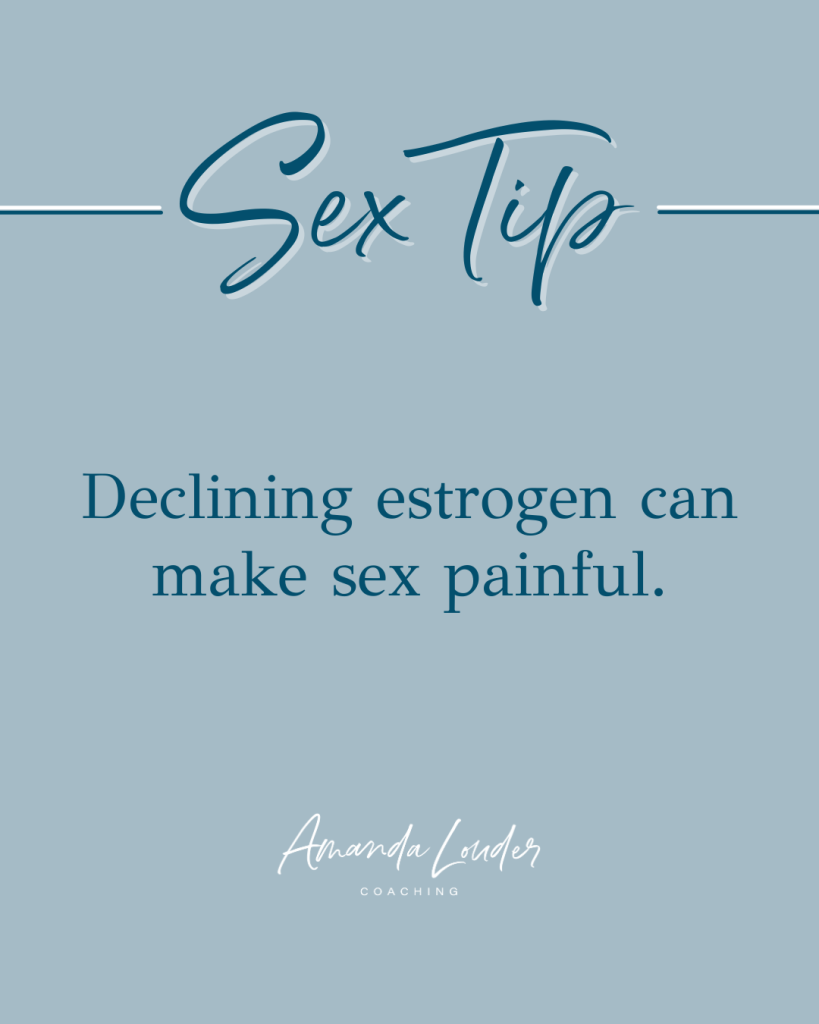
Sexual desire is much more complex than many of us are led to believe. Desire is multifaceted and must be examined from a biological, psychological, and sociological standpoint. Why do I talk about desire so often? Because a lack of desire is the number one thing that women come to me for help with. They tell me that their desire has just disappeared and they have no idea where it’s gone. So, let’s dive into what goes into desire and maybe how to get it back.
Show Notes:
Follow Amanda on Facebook and Instagram.
Join Amanda’s Private Facebook Group.
References for this episode:
Come, As You Are by Dr. Emily Nagoski
Episode 86 – Spontaneous vs Responsive Desire
Show Summary:
Sexual desire is something that we talk about often on this podcast. Why? Because a lack of desire is the number one thing that women come to me for help with. They really don’t understand where their desire went or how to get it back. Today we are going to dive in deeper to something that Dr. Kelly Casperson and I touched on 2 weeks ago in our episode about hormones; that desire is multiple faceted, and must be examined from a biological, psychological, and sociological standpoint. Let’s dive it.
To start, let’s unravel the biological aspect. At its core, biological factors encompass the physiological mechanisms that influence women’s sexual desire. Think hormones like estrogen and testosterone, neurotransmitters like dopamine, and the intricate interplay of neural circuits in the brain. These biological underpinnings are crucial in shaping a woman’s libido, arousal patterns, and overall sexual response.
For example, during the menstrual cycle, fluctuations in hormone levels can significantly impact a woman’s desire for sex. Research suggests that rising levels of estrogen prior to ovulation can heighten sexual desire, while progesterone dominance in the luteal phase may dampen it. Moreover, neurotransmitters such as dopamine, serotonin, and oxytocin play pivotal roles in modulating mood, arousal, and bonding, further highlighting the intricate biological tapestry of women’s sexual desire.
And as we discussed in my episode with Dr. Kelly Casperson, during perimenopause and menopause, there is a huge dip in hormones that can often affect women’s desire. These hormonal fluctuations can have a profound impact on a woman’s sexual desire and response. For some women, declining estrogen levels may lead to decreased vaginal lubrication, discomfort during intercourse, and reduced sensitivity in the genital area, which can affect their enjoyment of sexual activity and desire. Moreover, changes in hormone levels can also influence mood, energy levels, and overall well-being, further impacting a woman’s sexual desire and motivation. For example, symptoms such as fatigue, insomnia, and mood swings can diminish interest in sexual activity and intimacy. As women transition into menopause, the hormonal landscape undergoes further transformations. Estrogen levels plummet, leading to more pronounced symptoms such as vaginal atrophy, urinary problems, and changes in libido.
Another aspect of the biological is the sexual dual control model. This model (which is discussed extensively in the book Come, As You Are by Dr. Emily Nagoski and I talked about in Episode 86) offers valuable insights into the intricate mechanisms underlying women’s sexual desire by highlighting the interplay between sexual excitation and sexual inhibition systems within the brain. The sexual excitation system is like the gas pedal, driving arousal and sexual response. The sexual inhibition system acts as the brake, regulating and inhibiting sexual cues and behaviors. For women, variations in the sensitivity and balance between these two systems can profoundly influence their sexual desire and behavior.
For example, a woman with a highly sensitive accelerator may experience intense sexual arousal in response to erotic stimuli, leading to heightened sexual desire and exploration. Conversely, a hyperactive brake may dampen sexual responsiveness, leading to challenges in arousal and desire. From my experience, many women with desire issues have lots of sexual brakes and are unaware of many of their sexual accelerators. We talk about this a lot in my coaching program.
Now, let’s shift our focus to the psychological dimension. Unlike biological factors, which are largely governed by physiological processes, psychological aspects delve into the realm of thoughts and belief systems, emotions, and experiences that influence a woman’s sexual desire. This encompasses a myriad of factors including past traumas, conditioning, cultural upbringing, self-esteem, body image, and relationship dynamics.
For instance, a woman who has experienced sexual trauma (whether that is previous sexual abuse or assault, or could even be years of duty sex within the marriage) may struggle with intimacy and arousal due to psychological triggers associated with past experiences. Similarly, societal norms and cultural attitudes towards sexuality can profoundly impact a woman’s sexual self-perception and desires. Moreover, individual differences in personality traits, such as extraversion, neuroticism, and openness to experience, can shape how women perceive and express their sexuality.
One significant psychological factor that can impact a woman’s sexual desire is stress. High levels of stress, whether from work, relationships, or other life challenges, can significantly dampen libido and arousal. The physiological response to stress, including elevated cortisol levels and decreased production of sex hormones, can disrupt the delicate balance needed for sexual responsiveness.
Another key aspect is body image and self-esteem. Women who struggle with body image issues or low self-esteem may experience difficulties in feeling confident and desirable in sexual situations. Media representations of an idealized body type can exacerbate these insecurities, leading to feelings of inadequacy and reluctance to engage in sexual activity.
Additionally, relationship dynamics can profoundly influence a woman’s desire for sex. Positive experiences characterized by trust, intimacy, and pleasure can enhance sexual desire, while negative experiences marked by coercion, betrayal, or dissatisfaction can create barriers to sexual openness and exploration.
Furthermore, the quality of communication and emotional intimacy within a relationship can impact a woman’s sexual desire. Couples who are able to openly communicate their desires, boundaries, and needs tend to experience greater sexual satisfaction and desire. Conversely, unresolved conflicts, lack of emotional connection, and unmet relational needs can contribute to diminished sexual desire and satisfaction.
Finally, let’s explore the sociological dimension. Unlike biological and psychological factors, which focus on individual-level processes, the sociological aspect zooms out to examine broader social, cultural, and contextual factors that shape women’s sexual desires. This includes societal norms, gender roles, media representations, and institutional structures that influence how women perceive and navigate their sexuality within a larger social framework.
For example, traditional gender roles may prescribe different expectations and behaviors for men and women regarding sexual initiation, expression, and autonomy. Media portrayals of sexuality often perpetuate unrealistic standards of beauty and sexual performance, which can impact women’s self-image and confidence in the bedroom. Moreover, systemic factors such as access to healthcare, education, and economic resources can also influence women’s sexual health and well-being.
One significant sociological factor that shapes women’s sexual desire is cultural norms and values surrounding sexuality. Different cultures have varying attitudes towards sex, ranging from conservative to liberal. In a conservative religion, of course these views tend to be more conservative as well. For example, in cultures like ours that prioritize modesty and chastity, women may internalize beliefs that equate sexual desire with shame or immorality, leading to feelings of guilt or repression. These cultural norms dictate acceptable sexual behaviors, expectations, and taboos, which can profoundly impact how women perceive and express their desires.
Moreover, societal expectations regarding gender roles and sexual scripts can influence women’s sexual desires and behaviors. Traditional gender roles often prescribe passive and submissive roles for women in sexual encounters, while men are expected to be assertive and dominant. These prescribed roles can limit women’s agency and autonomy in expressing their desires and preferences.
Additionally, media representations of sexuality play a significant role in shaping women’s sexual desires and self-perception. Mainstream media often perpetuates unrealistic standards of beauty, sexual performance, and desirability, which can contribute to feelings of inadequacy and insecurity among women. Furthermore, the lack of diverse and authentic portrayals of female sexuality can limit women’s understanding of their own desires and pleasure.
As you can see, women’s sexual desire is a complex interplay of biological, psychological, and sociological factors. All of these get addressed within my Embrace You Membership because all are important. If you are interested in understanding yourself, your sexuality, and your desires better and help them work for you instead of against you, please consider signing up. You can use the code “Podcast” at checkout to get half off your first month. That’s just $24.50 for a month to try it out.
Remember, love is a journey, not a destination. Stay committed, stay passionate, and stay connected. Goodbye for now.




